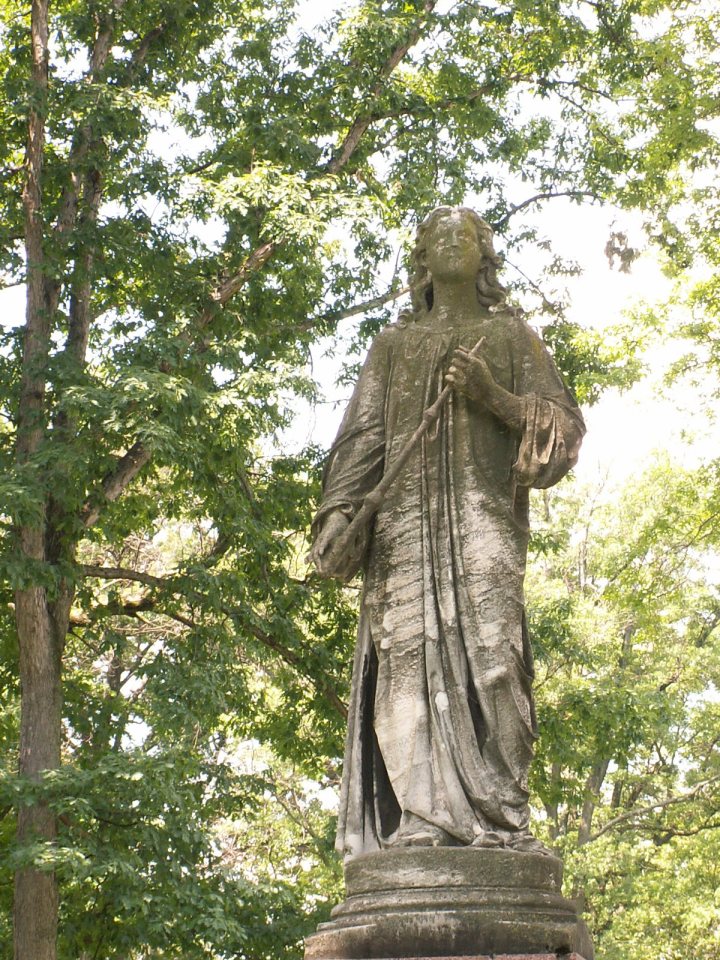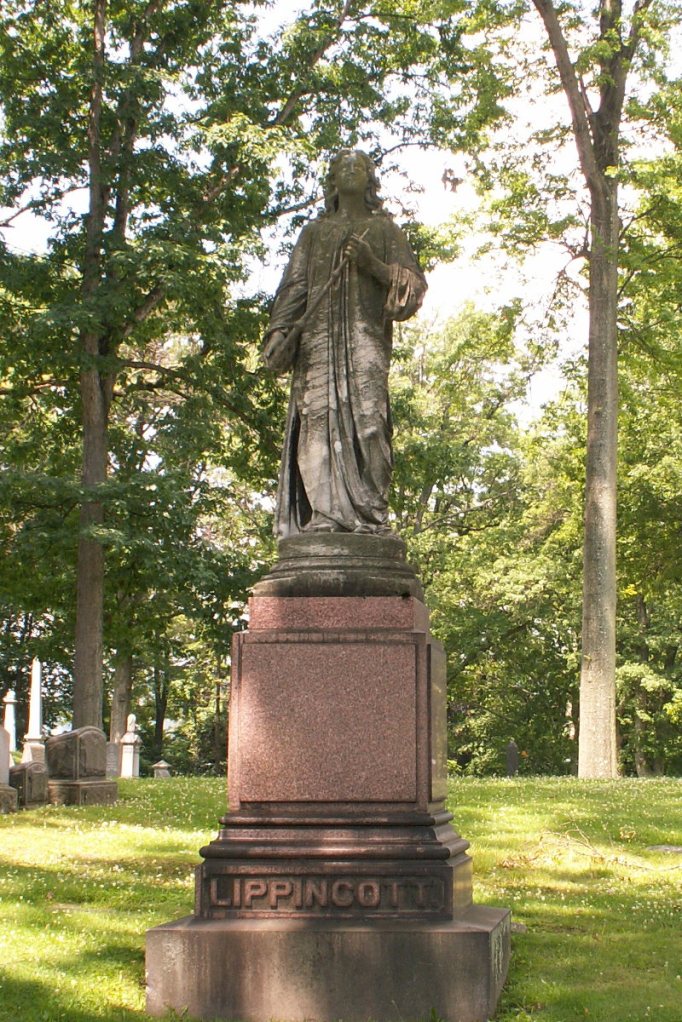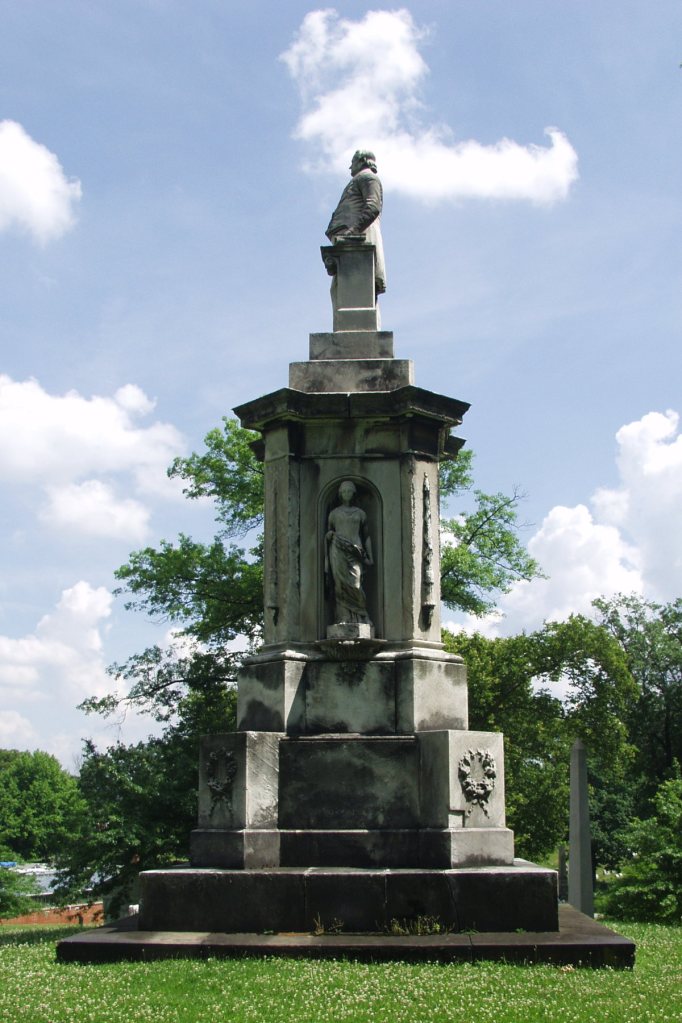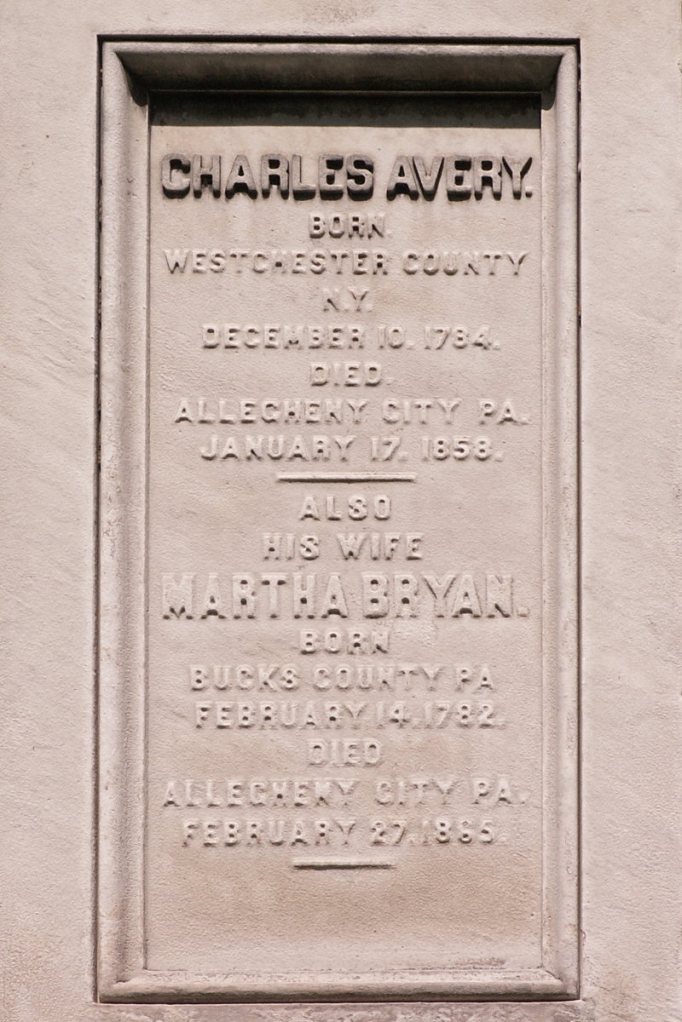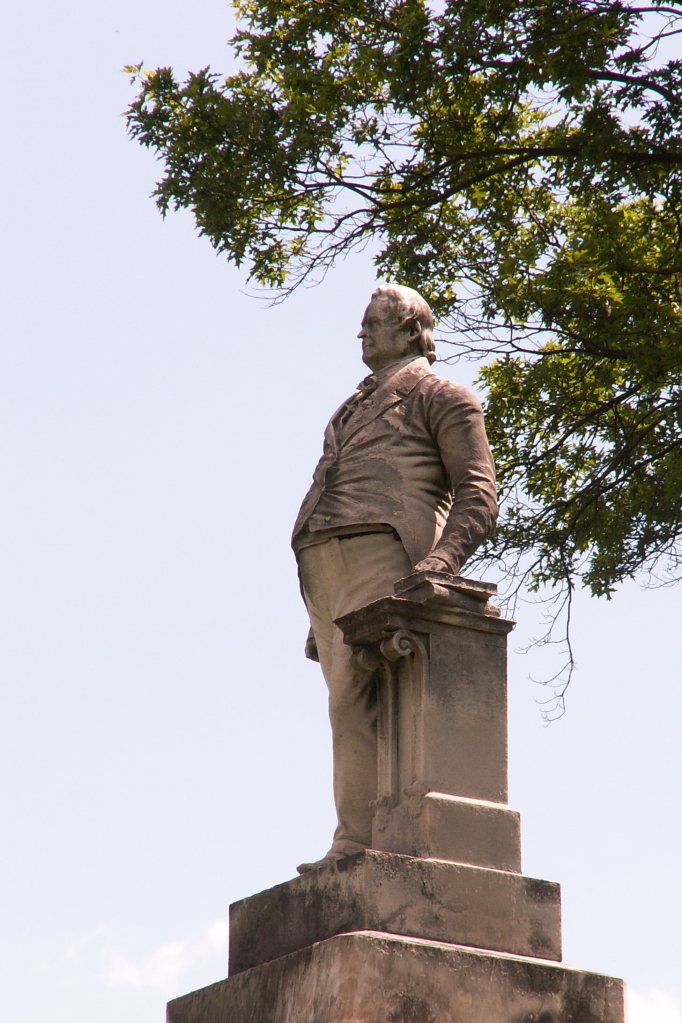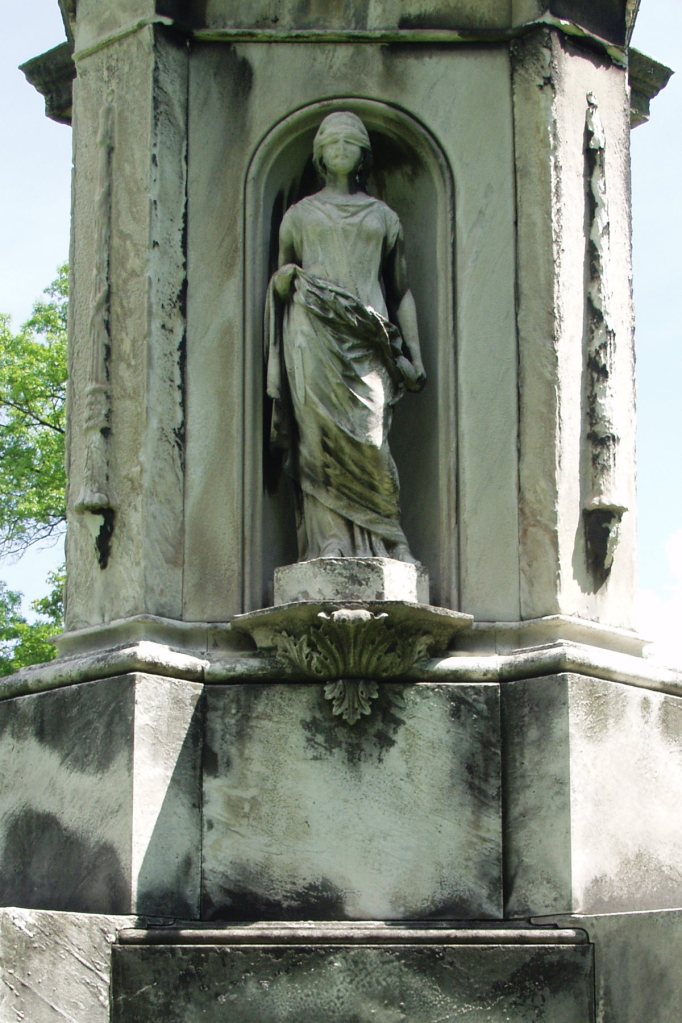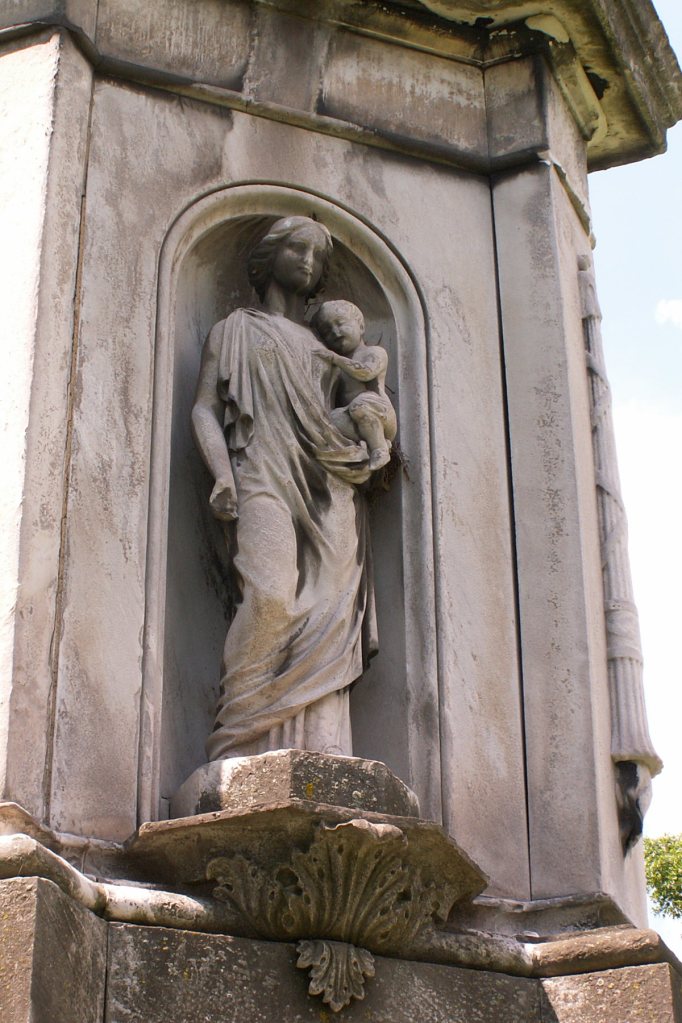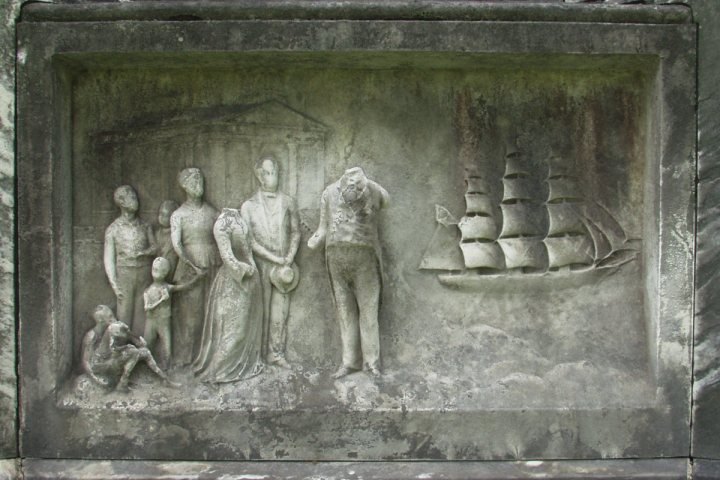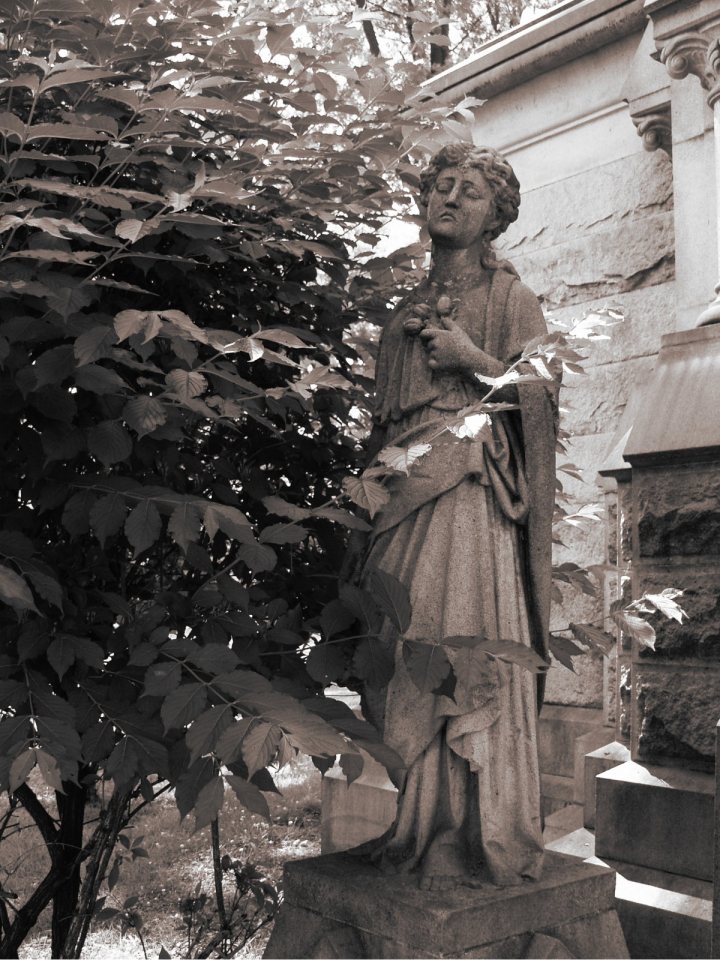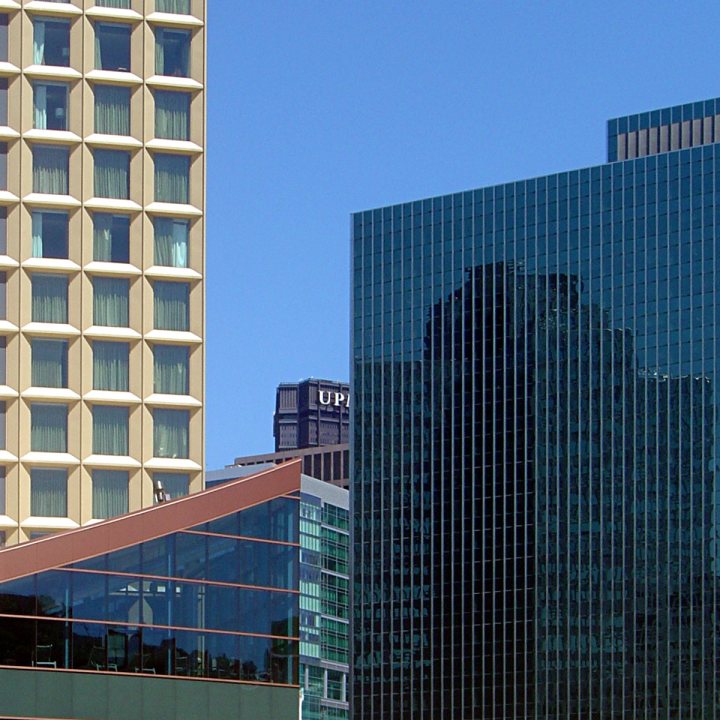The sculptor, Isaac Broome, was very well regarded in his day (this monument dates from 1867), and his works may be found in a number of American museums. Old Pa Pitt is not sure what the wand represents, and would be delighted if someone would enlighten him.
-
Grant Building

KONICA MINOLTA DIGITAL CAMERA Henry Hornbostel’s only real skyscraper was briefly the tallest thing in Pittsburgh when it opened in 1929, before being surpassed two years later by the Gulf Building. It’s famous for the air beacon on top—red until recently, but now green to match the logo of the Huntington Bank—that flashes “Pittsburgh” all night in Morse Code. Behind and to the left, the building with three enormous arches is Hornbostel’s City-County Building.
-
The Charles Avery Memorial in Allegheny Cemetery
Unfortunately this memorial was executed in soft stone that has decayed considerably over the last century and a half. It’s still impressive, though, and the erosion gives one the sense of confronting the distant past face to face.
Avery was a notable abolitionist who founded the Allegheny Institute and Mission Church, later Avery College, whose mission was to provide an education meeting the highest standards for free black students of both sexes. (The rumor had it that it was also a stop on the Underground Railroad, which is quite likely, given Avery’s strong feelings about slavery.) Avery’s monument is decorated with allegorical sculptures whose mutilation over the years makes their meaning hard to interpret. This blindfolded woman has lost her right hand and whatever she was holding in it. Was she Justice?
This young mother, again, has lost part of her right hand, and probably some allegorical attribute with it.
This mutilated relief may depict Avery College in the background; though it survived till about 1970 in Dutchtown, Father Pitt has not found a picture of the building. The headless figure at right has the rotund torso of the Rev. Charles Avery; the other figures seem to be some of the Negro citizens who benefited from his work. Father Pitt is not sure what the ship has to do with the story; Avery was not one of those colonizationists who believed in sending Africans back to Africa. He believed that education would make the Negro an equal citizen in the United States. He did, however, sponsor missions to Africa, and perhaps the ship represents those.
-
Grandview Avenue, Mount Washington
This is perhaps the street with the best view in North America. The luxury condos along Grandview Avenue account for a tiny fraction of the population of Mount Washington, but about half the neighborhood’s total wealth.
-
Mourners on the Ford Mausoleum, Allegheny Cemetery
Mr. J. B. Ford was the founder of the glass empire that today is PPG, and his mausoleum spared no expense. These statues flank the entrance.
-
The Lion’s Head in Frick Park

KONICA MINOLTA DIGITAL CAMERA Old Pa Pitt does not know whether anyone else refers to this rock outcropping by that name, but to him it is always a lion’s head. It projects from a cliff below the Homewood Trail not far from the Frick Art Museum.
-
Point Park
The current landscaping scheme creates a broad, open recreational area in the middle, but with plenty of shade around the edges. The central jet of the fountain can reach 150 feet on a good day.

